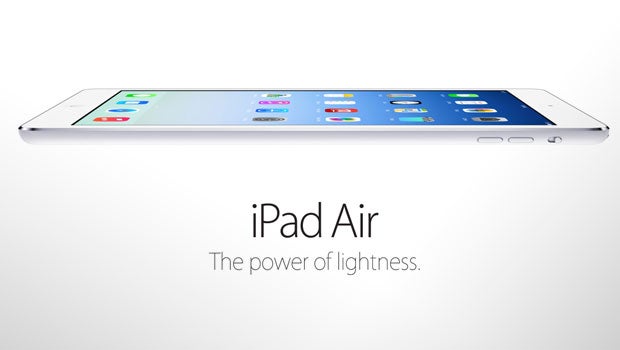Apple iPad Launch – the new iPad Air design is what matters most

October’s Apple launch saw several new products introduced – laptops, a new desktop tower and two new iPads, including the iPad mini 2. However, there’s just one thing that really matters this time around.
It’s something that brings the iPad series back into balance – it’s the new design of the iPad Air, previously called the iPad 5.
What is the new iPad Air design?
With the iPad Air, Apple has radically altered how the tablet is designed. Where there was once a large expanse around the screen intended to act as a resting place for your thumb, there’s now hardly any space at all.
The iPad Air is less wide, less thick and altogether smaller than the tablet that preceded it – the iPad 4. And this change in direction is all down to the iPad mini.
How the iPad mini rocked the boat
The iPad mini was a tablet Apple denied the existence of – even ridiculed – until it appeared. In the early days of the iPad series (just a few years ago), then-CEO Steve Jobs rejected the idea of a small tablet as something that wasn’t big enough to offer a full tablet experience.
Granted, the iPad mini is a bit different to the 7-inch Nexus tablet that Jobs was referencing, but the iPad mini was undoubtedly a reaction to that tablet and its kin.
When it was released, not only was the iPad mini a success, it outsold its bigger brother – at that point the iPad 4. The mini was cannibalising the full-size iPad’s sales, because it made people realise that in three years the ‘new and shiny’ iPad design had aged rapidly. The iPad mini looked underpowered next to the iPad 4, but it was still far more desirable. It fitted into people’s lives far more easily.
Here’s why – the iPad mini was light and small enough to hold one-handed without looking ridiculous or straining your arms. It’s not just handy when you’re on the train. It’s handy all the time, wherever you are.
Even if Apple didn’t have all that much faith in the iPad mini – or so it seemed given how little innovation there was in the tablet beyond its size – the little tablet didn’t need it.
The iPad Air design specifics
Apple’s new iPad 5 design is here to redress the balance within the iPad range – it’s the full-size iPad playing catch-up with its little brother.
The specifics make the situation clear. The iPad Air is around 454g, 7.5mm thick and significantly less wide than the iPad 4. It’s almost 200g lighter – a technological marvel. It was never going to be quite as small as the iPad mini 2, but this is as close a compromise as Apple could manage with current technology.
As much as Apple would never say it, the iPad 5 is an admission that the iPad 4 was really an out of date device. People had already moved on.
The balance
Has the iPad Air done enough to win back the crowd it lost with the iPad mini? The good news – in one sense – is that the iPad mini is starting to feel just as past-it as the iPad 4. It’s not the design that’s the issue, but the screen and processor. 3D games like Asphalt 8 chug away on the thing, and the screen resolution is well below the sharpness we expect of a premium tablet – the Nexus 7 2 is cheaper and thrashes it in this respect.
But will they return to the iPad mini 2 Retina or opt for the iPad Air?
Industry analysts reckon that the iPad mini 2 could sell twice the numbers the iPad Air shifts – although that was a few days before the new iPad was even announced. However, a straw poll of the TrustedReviews office suggests that, as Apple hopes, many who had a think about the iPad mini will transfer their affections to the iPad Air – rather than its little brother. Bigger is better once more – and everything in the universe is right again.
But which would you prefer – iPad Air or iPad mini 2? Let us know in the comments.
Next, read our iPad Air vs iPad mini 2 comparison


